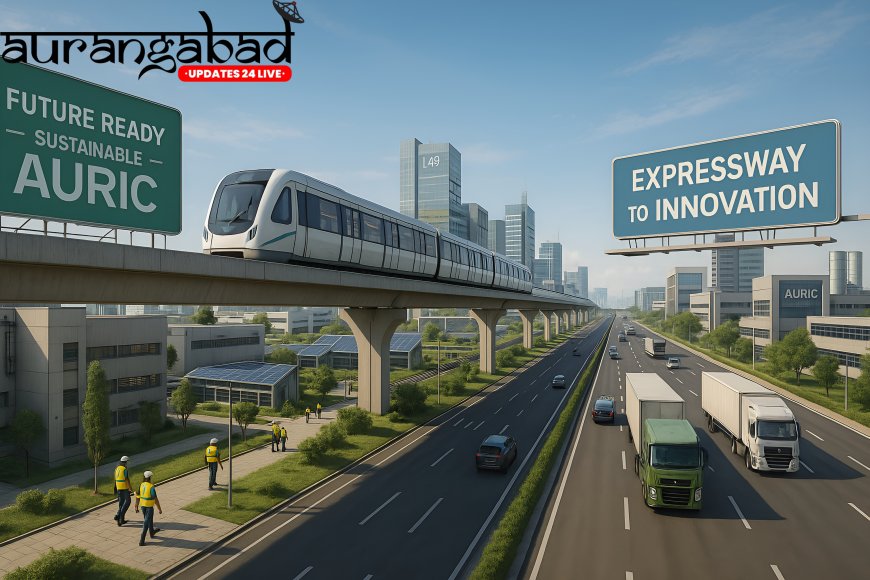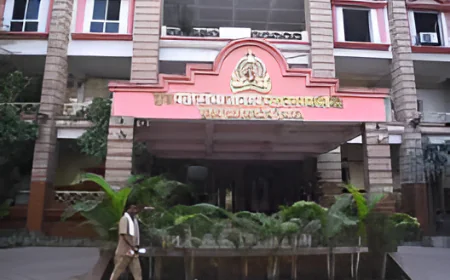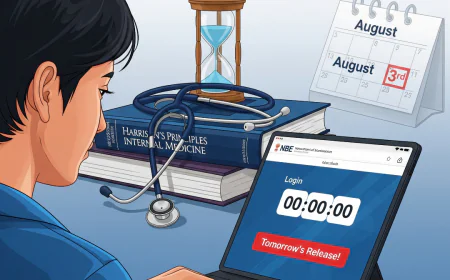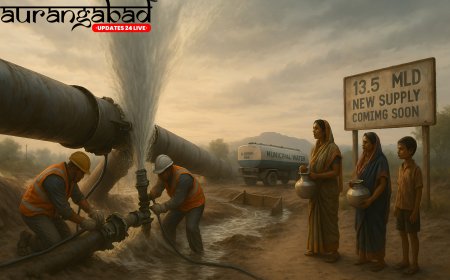AURIC Industries Demand MRTS and Expressway
Industries in AURIC (Aurangabad Industrial City) are urging authorities for a Mass Rapid Transport System (MRTS) and an expressway to support expansion and address commuting and logistics challenges.

CHHATRAPATI SAMBHAJINAGAR: The Aurangabad Industrial City (AURIC), hailed as India's first smart industrial city and a crucial component of the Delhi-Mumbai Industrial Corridor (DMIC), is undergoing significant expansion. As industrial activity within the smart city intensifies, the companies and developers operating there are urgently appealing to authorities for a substantial upgrade in transportation infrastructure, specifically a Mass Rapid Transport System (MRTS) and a dedicated expressway.
Industry stakeholders argue that the existing transportation network is inadequate to support AURIC's burgeoning growth and the increasing influx of workforce. The demand for advanced connectivity is seen as essential not only for improving the efficiency of logistics and freight movement but also for ensuring seamless commuting for thousands of employees traveling daily between Chhatrapati Sambhajinagar city and the industrial zone.
The Imperative for Mass Rapid Transport
A key component of the industrial community's demands is the implementation of a Mass Rapid Transport System (MRTS). AURIC, designed to be a state-of-the-art manufacturing and investment destination, relies heavily on a skilled workforce. As the number of operational units grows, so does the volume of people commuting to the area.
Currently, the reliance on conventional modes of transport, such as buses and personal vehicles, is leading to severe congestion during peak hours. This congestion results in extended commute times and increased stress for the workers, which can negatively impact productivity and employee morale. An MRTS, such as a Metro or an efficient Bus Rapid Transit (BRT) system, would provide a reliable, high-frequency, and scalable solution to this challenge.
The introduction of an MRTS would not only alleviate traffic bottlenecks but also promote sustainable commuting. It would offer a predictable travel time, encouraging more workers to rely on public transport rather than personal vehicles, thereby reducing the carbon footprint of the industrial zone. This aligns with AURIC’s vision as a ‘smart’ and sustainable city.
The Need for a Dedicated Expressway
In tandem with the MRTS, industries within AURIC are pushing for the development of a dedicated expressway. This infrastructure is vital for the seamless movement of raw materials, finished goods, and equipment. While the existing road network serves the purpose, it is not optimized for the high volume of heavy commercial vehicles necessary for robust industrial operations.
An expressway would significantly reduce transit times between AURIC and major logistical hubs, including national highways, railways, and potentially air cargo facilities. Faster connectivity enhances supply chain efficiency, reduces operational costs for businesses, and makes AURIC a more attractive destination for both domestic and international investors.
The proposed expressway would also address the safety concerns associated with heavy industrial traffic mixing with regular commuter flow on existing roads. By providing a dedicated corridor for freight movement, the expressway would enhance safety and reduce accidents, a critical factor for sustained industrial activity.
Current Challenges and the Path Forward
The requests for MRTS and an expressway underscore the gap between AURIC’s ambitious growth trajectory and its current infrastructure limitations. While AURIC boasts excellent internal infrastructure, including smart utilities and IT connectivity, the external connectivity remains a bottleneck.
Industry representatives, including various manufacturing and business associations, have consistently highlighted these issues in their interactions with government authorities and the Maharashtra Industrial Development Corporation (MIDC). They emphasize that while the government has been supportive of industrial development, the transportation infrastructure needs to keep pace with the rapid industrial expansion.
The proposed infrastructure projects are massive undertakings that require significant financial investment and strategic planning. The development of an MRTS, in particular, would necessitate collaboration between state and central government agencies, as well as private sector participation.
Industry Voices and Economic Implications
Leaders within AURIC’s industrial ecosystem have been vocal about the urgency of these projects. They argue that efficient transportation is not merely a convenience but a competitive necessity. In a globalized market, reducing lead times and ensuring timely delivery are crucial for attracting and retaining businesses.
By providing world-class transportation infrastructure, AURIC can unlock its full potential as an economic powerhouse in the region. The successful implementation of an MRTS and an expressway would not only support the industries currently operating within AURIC but also catalyze further investment and job creation. This would have a cascading positive effect on the local economy of Chhatrapati Sambhajinagar and the broader Maharashtra region.










































